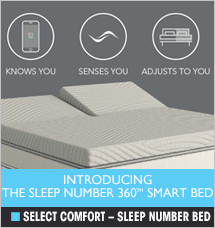
 The 50th anniversary of Medicare this fall brings good and bad news. The good news is that the long-term outlook has improved and the giant hospital trust fund will be solvent until 2030, according to a report from the program’s trustees.
The 50th anniversary of Medicare this fall brings good and bad news. The good news is that the long-term outlook has improved and the giant hospital trust fund will be solvent until 2030, according to a report from the program’s trustees.
But the bad news comes in a double dose. The trustee’s report warns that several million Medicare beneficiaries could see their Medicare Part B monthly premiums skyrocket this winter from $104.90 to $159.30, what one government aide called an “atypical” spike.
In addition, a new Government Accountability Office (GAO) report found that Medicare estimates that taxpayers lost some $60 billion –more than 10 percent of Medicare’s total budget – to fraud, waste, abuse and improper payments.
The big rate hike is predicted because of several factors. Medicare Part B, which is paid for by a combination of federal funds and beneficiary premiums, generally covers physician and outpatient costs. Part B costs increased more than last year and Social Security is not expected to have a cost of living increase next year.
Under the law, the cost of higher Medicare Part B premiums can’t be passed on to beneficiaries when they don’t get a Social Security raise. That means that the higher Medicare costs have to be covered by just 30 percent of Medicare beneficiaries. This will include the 2.8 million Medicare enrollees new to the program this year, 3.1 million beneficiaries with incomes higher than $85,000 a year and 1.6 million beneficiaries who pay their premium directly instead of having it deducted from Social Security. This rate hike also includes the 9 million folks who are on Medicare and Medicaid, known as dual eligible.
Part B premiums are set largely by a complicated formula written into law so the trustee’s predictions on premiums are usually very close to the final rates that are announced each fall by the Department of Health and Human Services. If the Social Security program determines this fall that a cost of living increase is needed for next year, that could diminish the premium hikes because it would be spread over millions more beneficiaries. But that is not expected.
The sharp increase might prompt some seniors to consider traditional Medicare too expensive and they could look to Medicare Advantage as a potential alternative. Medicare Advantage, which is managed care, offers lower costs but also restricts which providers they can use.
Some Good News
The trustee’s report’s really good news was on the financial health of Medicare Part A, which covers hospital costs. That program is being helped by an improved economy, while other factors, like more seniors joining Medicare Advantage are increasing costs. That’s because the government pays higher costs for those in Medicare Advantage.
While the 2030 date when funds would be exhausted remains unchanged, the trustee’s report said the program’s long-term outlook was improved based on a projection that health costs will grow at a slower rate after 2050.
The report also had a warning about the Social Security Disability Insurance program, which covers 11 million people with disabilities. It is projected to become insolvent in the fourth quarter of 2016. President Barack Obama has proposed shifting funding from another Social Security trust fund to address the imbalance.
The Bad News
Waste and fraud is not helping the Medicare program extend its long-term viability, as the Centers for Medicare and Medicaid Services (CMS) estimates that some $60 billion taxpayer dollars were wasted last year.
The GAO found that Medicare is sending money out to places with fake or bad addresses at an alarming rate. They are supposed to be doctor’s offices, clinics or hospitals, not hamburger stands, vacant lots and mailbox shops, but that’s what some of the 23,400 potentially fake or bad addresses on Medicare’s list of health care providers are, the GAO found.
The GAO report, revealed by ABC News, followed three earlier reports – going all the way back to 1998 – that found a “persistent weakness …that increased the risk” of defrauding Medicare.
It seems Medicare can’t get addresses right. The law says to get paid, Medicare doctors have to bill from the actual office where they practice medicine. But the newest GAO report continues to find problems with the addresses of enrolling physicians. The new report shows that no improvement is being made even though it would seem that it’s not that hard to fix the problem. GAO has been telling Medicare for years to utilize the U.S. Postal Service’s computer program, which can tell Medicare what kind of building is behind the address.
The GAO report also found that Medicare did not properly check medical licenses for physicians, and that hundreds of doctors had their licenses revoked for crimes, but not in the state where they were currently billing Medicare. As the non-profit journalism website Pro Publica has aggressively reported over the past few years (and we reported in February, 2014), in some cases, doctors who have been convicted of felony health care fraud have managed to register in other states and continued to bill Medicare.
In response, Medicare says they don’t have the authority to cross-check state license revocation or suspension in states where a physician is not set up to bill Medicare.
Congress Changes Rules for ‘Observation Care’
More bad news, disguised as good news. Congress has finally moved to change the laws about observation care, a problem that’s been vexing seniors for years because the laws are unclear. This has forced millions of seniors to face huge unexpected medical bills when they get home from short hospital stays.
Congress has supposedly “fixed” the problem – with the House and Senate approving legislation, but the fix appears to be a step in the right direction, without fixing the actual problem.
Under legislation that passed the Senate recently and was approved earlier this year by the House of Representatives, hospitals would now be required to tell Medicare patients when they enter the hospital under “observation care” status, instead of being actually admitted to the hospital.
On the surface, this might not appear to be a big deal, but if you or a loved one get stuck after a brief hospital stay with giant medical bills, this law could make a big difference. Unfortunately, it may not go far enough.
In 2013, we wrote about Jean Arnau, who spent five days in the hospital with a fractured spine. She was then discharged and needed to transfer to a skilled nursing facility for rehabilitation. Only then did her family find out that she had never been formally admitted as an inpatient to the hospital.
While the care the 80-plus-year-old Rhode Island woman got was exactly the same as she would have had she been admitted, instead she had been classified as an outpatient under “observation” – a status that cost her family thousands of dollars in co-pays and other fees – more than she would have paid if she had been admitted as an inpatient.
For many years, seniors have gone to hospitals but instead of being admitted as normal patients, they have been classified, for billing purposes, under “observation care.”
How widespread is this practice? According to the most recently available data from Medicare, total claims of observation patients increased 91 percent since 2006, to 1.9 million in 2013. Long observation stays, lasting 48 hours or more, rose by 450 percent to 170,219 during the same period, according to a Kaiser Health News analysis.
Most patients do get all the services of being admitted as a patient, but instead of actually being admitted, they are billed differently. Inevitably, they would get home from their brief stay and find out that the experience cost them a fortune, what Sen. Susan Collins, R-Maine, described at a congressional hearing as a “devastating” monetary effect on many seniors because, in most cases, these bills come as a total surprise. Most folks figure their Medicare would cover all of the costs of the hospital stay.
The problem with the new law, is that it doesn’t go far enough. It doesn’t get rid of observation care. Instead it requires patients be notified 24 hours after they have received observation care. For many patients, that will be too little, too late. In addition, the new law requires that patients get an explanation why they had not been admitted and what their financial responsibilities are.
While notification and an explanation are good steps forward, that still means many seniors are still getting billed for their hospital stay because they are observation care patients, not inpatients. Observation care hurts seniors in two ways: It keeps Medicare’s more comprehensive hospitalization coverage from kicking in, and it means they may not get Medicare’s limited nursing home benefit if they need care in a facility after being in a hospital.
To qualify for Medicare’s nursing home coverage, beneficiaries must first spend three consecutive midnights as an admitted patient in a hospital, and observation days don’t count. Several states already require observation care notices, including New York, Pennsylvania, Connecticut, Maryland, and Virginia, according to Rep. Lloyd Doggett, D-Tex, who sponsored changes in the new law. Medicare has been reluctant to take similar steps.
At a Senate Special Committee on Aging hearing a few months ago, lawmakers peppered Sean Cavanaugh, a deputy administrator at the Centers for Medicare & Medicaid Services, about how Medicare would handle the issue.
“There is an assumption if [patients] are being wheeled into a hospital bed,” and they are getting treatment, then they have been admitted, Sen. Claire McCaskill, a Missouri Democrat, told Cavanaugh. In 2013, Medicare officials attempted to control the use of observation care by issuing the so-called “two-midnight rule,” which would require hospitals to admit patients who doctors expect to stay at least two midnights. But Congress delayed its enforcement after hospitals said the rule was confusing and arbitrary.
The big problem that remains for seniors is that while it’s better to know you are on observation status, there’s really nothing you can do about it. Toby Edelman, a senior policy attorney at the Center for Medicare Advocacy told Kaiser Health News recently that there is no set process for challenging observation care while in the hospital, unlike issues such as disputing a discharge order when admitted patients feel they are not ready to leave.
The only way to switch from observation to admitted status is to persuade a physician or the hospital to make the change, Edelman says. And that decision doesn’t apply to the time the patient has already spent on observation. After leaving the hospital, challenging observation care is inevitably frustrating since Medicare appeals judges may decide that a patient’s condition did not require inpatient-level care – even when they received care that could have been provided nowhere else but a hospital.
[Also contributing to this column: Kaiser Health News, the New York Times, ABC News and Modern Healthcare]
Alan Schlein runs DeadlineOnline.com, an internet training and consulting firm. He is the author of the bestselling “Find It Online” books.




























































